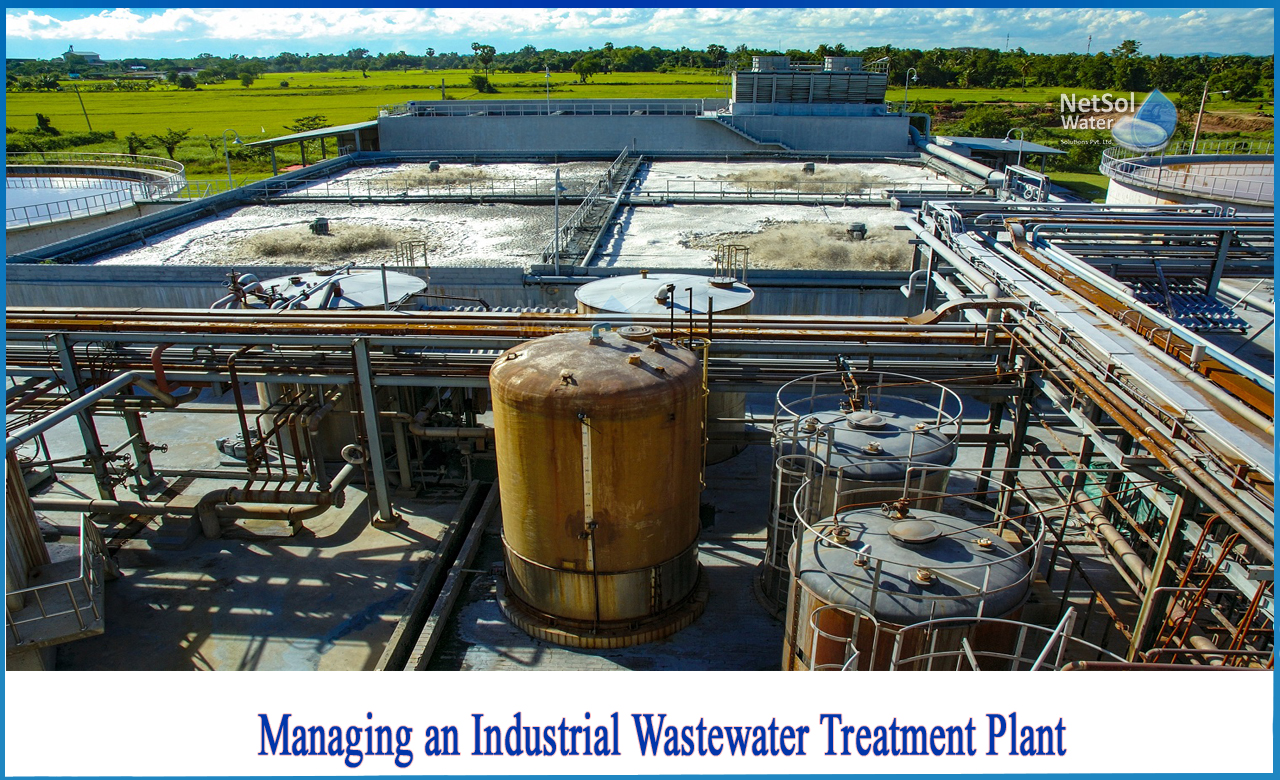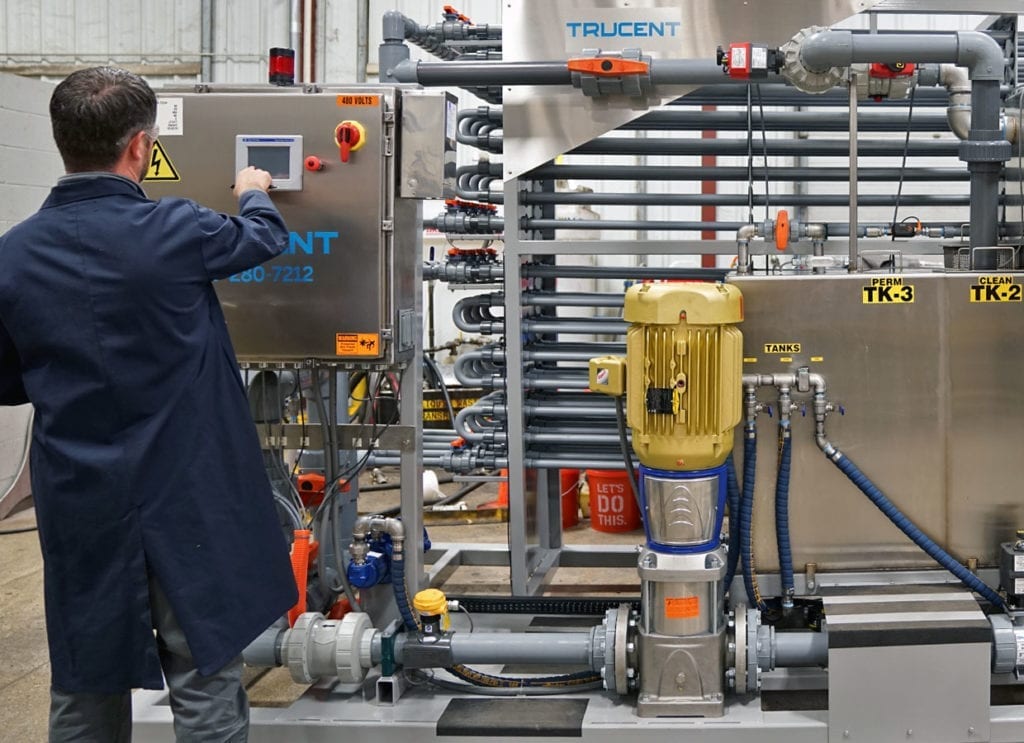Industrial Waste Water Treatment-- Lasting Solutions for Industrial Water Management
Industrial Waste Water Treatment-- Lasting Solutions for Industrial Water Management
Blog Article
Technologies and Breakthroughs in Industrial Waste Water Therapy Technologies
The landscape of industrial wastewater treatment is undertaking a transformative shift, driven by developments that boost both efficiency and sustainability. As regulative standards advance, the combination of AI and equipment knowing into wastewater management systems guarantees to simplify operations and make certain conformity.
Overview of Waste Water Therapy Technologies
Wastewater therapy modern technologies encompass a series of approaches developed to eliminate impurities from commercial effluents prior to their launch right into the atmosphere. These technologies are vital for keeping environmental balance and making certain compliance with environmental regulations. The main categories of wastewater therapy include physical, chemical, and organic methods, each offering distinct functions based upon the nature of the contaminants existing.

Biological treatment methods use microorganisms to degrade organic issue, making them particularly efficient for organic-rich effluents. Methods like triggered sludge and biofilm activators harness the all-natural degradation capabilities of microorganisms, leading to significant decreases in biochemical oxygen need (FIGURE)
Advanced Filtering Methods
Advanced filtering methods represent a vital advancement in the realm of commercial wastewater treatment, improving the effectiveness of impurity elimination processes. Industrial Waste Water Treatment. These methods incorporate a variety of technologies, consisting of microfiltration, ultrafiltration, nanofiltration, and turn around osmosis, which supply consecutive barriers for numerous particle sizes and chemical structures
Microfiltration and ultrafiltration use membrane layer systems to get rid of suspended solids, microorganisms, and bigger natural molecules, enhancing the quality of effluent prior to more treatment. Nanofiltration links the space between ultrafiltration and reverse osmosis, successfully eliminating divalent ions and organic substances, hence minimizing the tons on downstream processes.
Reverse osmosis offers the highest degree of filtration by permitting just water and little molecules to pass through its semi-permeable membrane layers, making it ideal for reclaiming premium water from commercial effluents. Current improvements in membrane innovation, consisting of the development of more long lasting and fouling-resistant products, have actually significantly enhanced functional performance and reduced prices.
Integrating these sophisticated filtering strategies not only improves the total therapy process but likewise adds to sustainability initiatives by allowing water reuse and resource recuperation in commercial settings. (Industrial Waste Water Treatment)
Biological Treatment Innovations

Furthermore, the growth of engineered biological systems, such as membrane bioreactors (MBRs), combines organic treatment with innovative membrane layer filtering. This assimilation permits higher effluent quality and lowered footprint, making it suitable for space-constrained industrial facilities. Technologies in genetically crafted bacteria have also emerged, improving the biodegradation of specific pollutants, such as pharmaceuticals and hefty metals, that are traditionally testing to remove.
Additionally, the implementation of bioaugmentation techniques, where valuable microorganisms are introduced to boost the existing biological treatment procedures, has actually revealed appealing results in improving therapy efficiency. These innovations jointly represent a fad towards even more lasting and efficient organic check treatment methodologies that can adjust to the developing intricacies of industrial wastewater streams. As industries remain to prioritize ecological compliance, these biological technologies will play an essential role in wastewater monitoring.

Source Healing Approaches
In commercial setups, the integration of resource recuperation approaches has actually become progressively essential for enhancing sustainability and decreasing waste. These approaches concentrate on drawing out useful materials and energy from Your Domain Name wastewater streams, thereby changing possible toxins into reusable sources.
One noticeable strategy is nutrition recuperation, where nitrogen and phosphorus, usually present over in wastewater, are recorded and exchanged fertilizers. This not just decreases environmental impacts however also provides a circular economy option for farming applications. Furthermore, technologies such as anaerobic digestion permit the conversion of natural waste into biogas, a sustainable power source that can balance out fossil gas use in commercial operations.
Additionally, advanced filtration and membrane layer technologies promote the recovery of industrial by-products such as salts and metals. These recuperated materials can be rehabilitated right into production procedures, minimizing the need for virgin sources.
Future Patterns in Drainage Management
As markets increasingly prioritize sustainability, the future of wastewater monitoring is established to undertake significant transformations. Technical developments, such as artificial knowledge and artificial intelligence, will certainly make it possible for more efficient monitoring and monitoring of wastewater systems. These modern technologies can anticipate maintenance demands, enhance treatment processes, and improve decision-making, ultimately reducing operational costs and environmental effect.
Additionally, the assimilation of round economic situation concepts will play a vital function in wastewater management. Industries are expected to move in the direction of systems that not just deal with wastewater however also recover useful resources, such as nutrients, water, and power. This transition will decrease waste and advertise the reuse of materials, lining up with international sustainability objectives.
Arising therapy strategies, such as membrane bioreactors and advanced oxidation processes, will further improve the efficiency of wastewater therapy, enabling greater quality effluents suitable for reuse. In addition, regulative frameworks are most likely to advance, highlighting more stringent requirements for wastewater discharge and encouraging markets to take on innovative treatment services.
Final Thought
In verdict, the advancement of industrial wastewater treatment innovations shows a substantial change towards enhanced effectiveness and sustainability (Industrial Waste Water Treatment). Developments in advanced filtering strategies, biological treatments, and resource recovery methods highlight the sector's dedication to environmental stewardship.
The landscape of industrial wastewater therapy is undergoing a transformative shift, driven by technologies that improve both efficiency web and sustainability.Wastewater therapy innovations include an array of methods made to get rid of pollutants from commercial effluents before their release into the setting.Utilizing the power of organic processes has actually led to significant innovations in the therapy of commercial wastewater.Additionally, the application of bioaugmentation strategies, where beneficial microorganisms are introduced to improve the existing biological treatment procedures, has actually revealed promising results in improving therapy performance. These innovations jointly indicate a trend in the direction of even more sustainable and efficient biological therapy methods that can adapt to the progressing intricacies of commercial wastewater streams.
Report this page